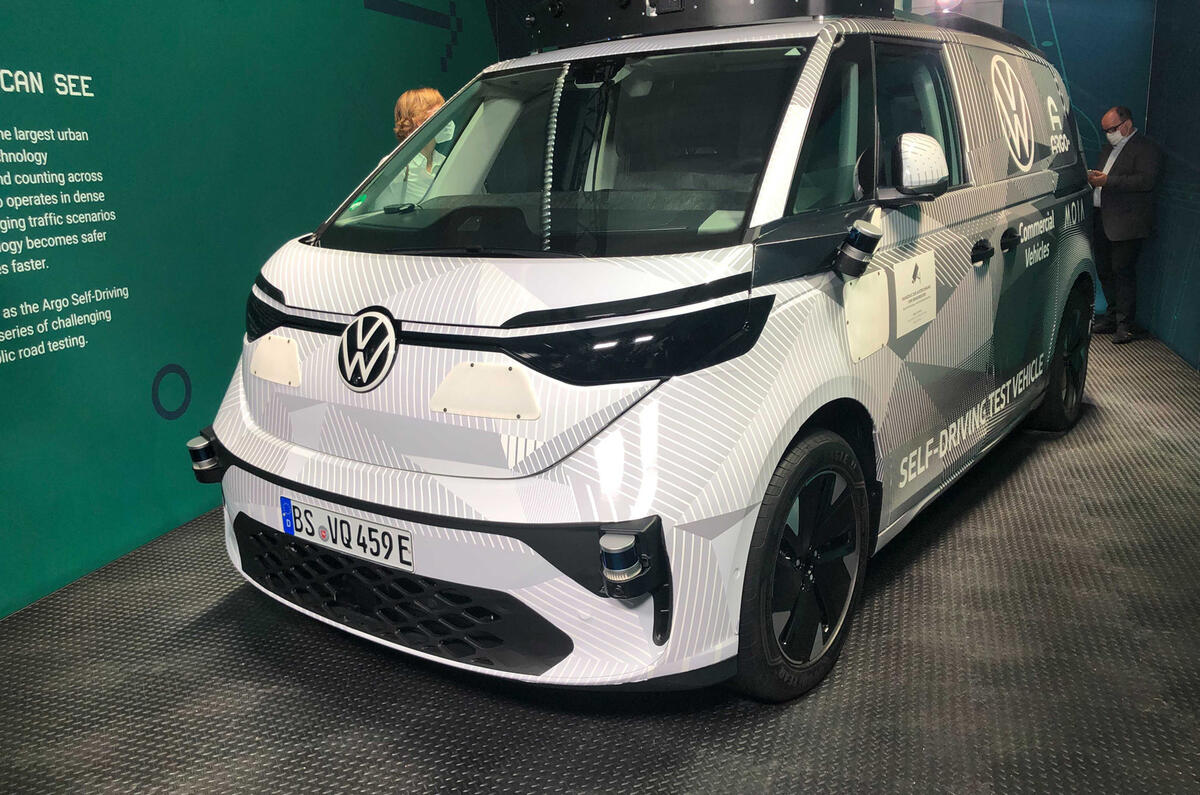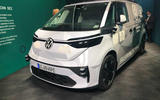Volkswagen has revealed a prototype autonomous version of the forthcoming ID Buzz electric MPV that features software developed by self-driving technology specialist Argo AI.
The ID Buzz, which features a retro design that evokes the original T2 Transporter, is set to launch next year in both passenger and commercial vehicle forms. Unveiled at the Munich motor show, this new ID Buzz AD version features a raft of camera, lidar and radar sensors to enable the autonomous technology that has been developed by US start-up Argo.
Munich motor show 2021: all the new cars and updates
The VW Group is planning for its Moia ride sharing subsidiary to be the first firm to run the ID Buzz AZ from 2025 onwards, initially in Hamburg. Autonomous ID Buzz prototypes fitted with the Argo AI technology have begun testing in a number of urban environments including Munich, where Argo's European arm is based.
By 2030, Volkswagen estimates that some 15% of its revenue will come from mobility services. "Autonomous driving will change the industry like nothing else before," said CEO Herbet Diess, adding that the technology could, in effect, double the size of the industry through the creation of new jobs, legislative considerations and products.
The Argo software uses data from the cameras, radar and lidar systems – including a roof-mounted proprietary Argo Lidar sensor – to create a 360-degree maps of the vehicle's surroundings.
Argo claims its software can detect objects from more than 400 metres away, and can also predict the actions of pedestrians, cyclists and other vehicles, adapting the controls as required.
The fully autonomous testing of the vehicle takes place at the Argo AI development centre near Munich, where the firm has a closed course that allows for testing in a variety of conditions. Argo also has a test track in the USA.
The aim of the trials, said Argo CEO Brian Salesky, is "to create the world's best driver". The advantages of autonomous vehicles in urban environments are numerous, he said: "An autonomously driving vehicle has a computer that is never getting tired, it's never getting distracted, it's always paying attention 360 degrees and 100 metres out, and it's always learning and improving. We cannot say that about our human driving counterparts."
The two companies are focusing primarily on congested and complicated urban scenarios at this stage of development, because that is where they envision the most customer demand will be initially. A roll-out into more extra-urban areas will come, they said, but for now, said Salesky, "it makes sense to start the business where there's a lot of vehicles on the road."





























Join the debate
Add your comment
Are all fully autonomous cars going to have that hideous Carbuncle on the Roof?, bit "back to the future ", even Doc Brown wouldn't have des that.